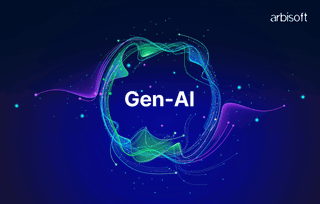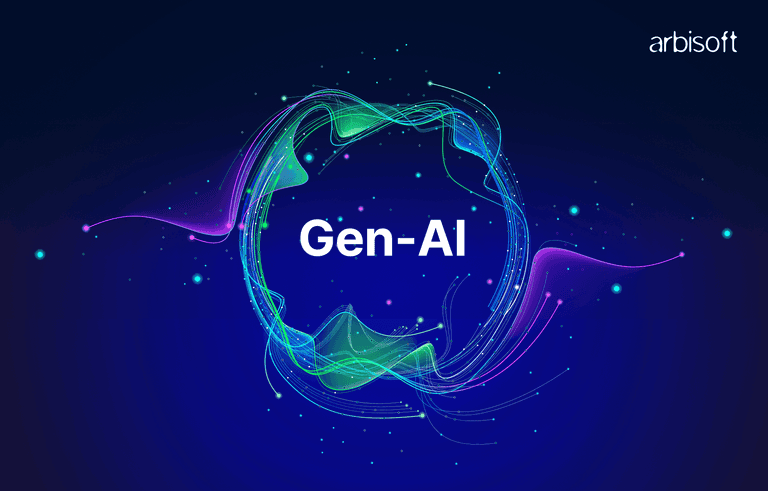We put excellence, value and quality above all - and it shows




A Technology Partnership That Goes Beyond Code

“Arbisoft has been my most trusted technology partner for now over 15 years. Arbisoft has very unique methods of recruiting and training, and the results demonstrate that. They have great teams, great positive attitudes and great communication.”
Conversational AI and Generative Models: A Powerful Combination for the Future

In the not-so-distant future, the convergence of Conversational AI (CAI) and Generative Models promises to revolutionize our digital interactions.
This imminent reality is driven by the powerful synergy between CAI and generative giants like Llama and GPT-4. These models possess the ability to process information and respond in ways that are more refined and human-like than ever before.
In this blog, we delve into the captivating fusion of these technologies, where machines learn to engage with the precision of humans, fueled by generative models.
Conversational AI: Crafting Dialogues
At the core of intelligent assistants, chatbots, and virtual companions, Conversational AI (CAI) strives to go beyond robotic prompts. Its goal is to simulate the ebb and flow of human interaction. This complexity is achieved through Natural Language Processing (NLP), a suite of techniques enabling machines to dissect sentences, identify entities, extract meaning from context, and formulate coherent responses.
Yet, true fluency requires more. CAI incorporates dialogue state tracking and sentiment analysis solutions, allowing the AI to remember past conversations, comprehend emotional cues, and tailor responses accordingly. Imagine a chatbot not only answering your question but also empathetically adjusting its tone to match your emotional state. Many businesses are now implementing ai chatbot solution for ecommerce that delivers seamless user interactions.
The Generative Muse: Llama and GPT-4
Enter the generative giants – Llama (also referred to as Llama-V2) and GPT-4. Unlike traditional CAI models that often rely on pre-programmed dialogue trees, these generative models bring unprecedented flexibility and creativity. Trained on vast datasets of text and code, they leverage robust deep learning solutions to generate high-quality text, translate languages, and even create diverse forms of content.
When it comes to CAI, generative models act as the creative spark. They provide an expansive pool of potential responses, empowering the AI to select the most fitting one based on context and user intent.
The Future of Conversation: Synergy and Symbiosis
The combination of Conversational AI and Generative Models holds immense promise. As these technologies evolve, chatbots will become intuitive companions, virtual assistants will recognize our needs, and educational AI will customize lessons to individual learning styles.
However, ethical considerations are crucial. Biases present in training data can be magnified by generative models, emphasizing the importance of navigating the line between human and machine-generated content with care.
Digging Deeper
Llama and GPT-4 are both cutting-edge generative models built upon the transformer architecture, a powerful neural network designed for sequence-to-sequence learning. However, they each incorporate unique aspects within this framework.
Llama
- Employs a novel "Ghost Attention" (GATT) mechanism that improves accuracy and control in dialogue tasks. GATT allows the model to focus on informative parts of the input sequence while reducing the influence of irrelevant or repetitive elements.
- Offers a range of model sizes. This flexibility allows developers to choose a model that best suits their computational resources and application needs.
GPT-4
- Likely leverages a more complex Transformer architecture compared to Llama, potentially incorporating advancements like residual connections or pre-norm activation for improved training efficiency.
- Rumored to utilize a decoder-only architecture, focusing solely on generating text based on the input prompt. This may streamline text generation tasks but could limit its ability to perform tasks requiring more bi-directional processing, like question answering.
- Speculations suggest GPT-4 boasts a significantly larger parameter size than Llama, potentially ranging from 1 to 2 trillion parameters. While this translates to greater capacity for complex tasks, it also increases computational demands.
Key Differentiators
- Focus: Llama prioritizes accuracy and control in dialogue settings through GAtt, while GPT-4 might excel in general text generation tasks due to its potentially decoder-only architecture and larger parameter size.
- Efficiency: Llama's range of model sizes offers flexibility for resource-constrained environments, while GPT-4's immense size likely necessitates significant computational power.
- Transparency: Llama's open-source nature allows for greater scrutiny and potential customization, whereas GPT-4's closed-source nature limits public knowledge about its inner workings.
Challenges in the Harmony
As we delve into Conversational AI, we uncover challenges that disrupt the smooth flow, casting doubt over the potential of these advanced language models. Let’s look into a few.
Inconsistencies in Response Quality
Despite strides in language generation, there remains a persistent issue of varying response quality. Instances of factual errors, unclarified statements, and occasional deviations from context pose hurdles to achieving seamless interactions.
Factual Errors
User: "What is the capital of France?"
AI: "The capital of France is Berlin." (Incorrect answer)
Unclarified Statements
User: "I'm having trouble connecting to the Wi-Fi."
AI: "Have you tried turning it off and on again?" (Generic and unhelpful response)
Biases Amplified
The inherent biases present in training data can be inadvertently magnified by generative models, leading to outputs that mirror and potentially perpetuate societal biases. Addressing this challenge involves meticulous curation and diversification of datasets.
Consider a Conversational AI model trained on a dataset geared toward conversations from young males. If the dataset lacks diversity, the model may unintentionally amplify biases associated with that group. For instance, if a user asks about gender-related topics, the model's responses may unintentionally favor or stereotype young males, neglecting other perspectives. To address this, diverse and representative datasets are crucial during training to avoid reinforcing biases and promote inclusivity.
True Context Comprehension
Achieving genuine contextual understanding remains a major hurdle. Generative models occasionally need help to grasp the subtle meaning of conversations, resulting in responses that may seem irrelevant to the ongoing dialogue.
User: "I need a good recipe for chocolate no-bake cake."
AI Response: "Triple chocolate bake cake recipe."
In this scenario, the generative model fails to comprehend the context of the user's request for a chocolate cake recipe. The response is irrelevant, showcasing the challenge of achieving genuine contextual understanding.
Ethical Considerations Cast a Pervasive Shadow
The power to generate human-like text necessitates a profound responsibility. The risk of misinformation, manipulation, and biased outputs underscores the critical need for transparency, preventive measures against misuse, and the mitigation of potentially discriminatory language in AI development.
Envisioning a Captivating Future
The trajectory of Conversational AI, fueled by generative models, presents both promise and challenge. Overcoming these challenges requires dedicated research and development efforts in several key areas.
Improving Data Quality and Diversity
Careful curation and diversification of datasets are crucial to mitigate biases and factual errors present in training data, which can be amplified by the model.
Enhancing Context Understanding
Incorporating advanced techniques such as reasoning, summarization, and factual verification is pivotal for models to comprehend the true meaning of conversations and respond contextually.
Developing Explainable AI
Transparency in the decision-making process of models is paramount for building trust and identifying potential biases. The development of explainable AI mechanisms is crucial to achieving this transparency.
Establishing Ethical Frameworks
The formulation of comprehensive guidelines and regulations is imperative to govern the development and deployment of conversational AI systems. This ensures their responsible use and minimizes potential harm, fostering a trustworthy and ethical AI ecosystem.
A Vision for the Future
As CAI and generative models continue their evolutionary journey, a future unfolds where machines not only understand our words but genuinely converse with us. This promises to enrich our lives with intelligent interaction and personalized experiences. The possibilities of Gen AI are limitless, paving the way for a harmonious symphony in the digital age.
























